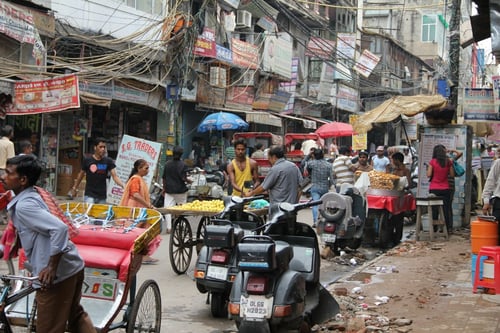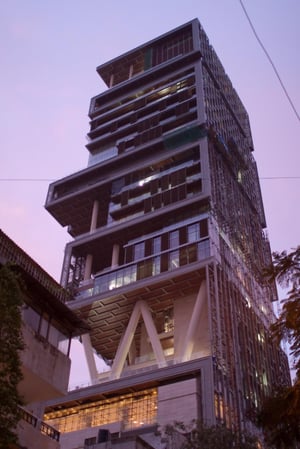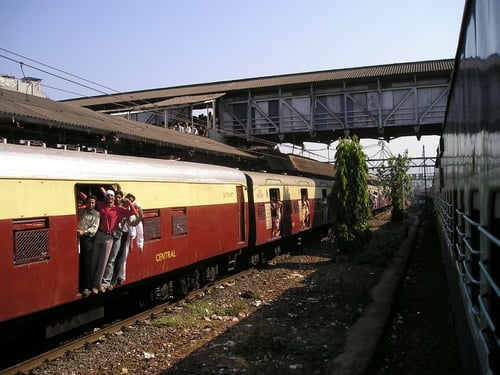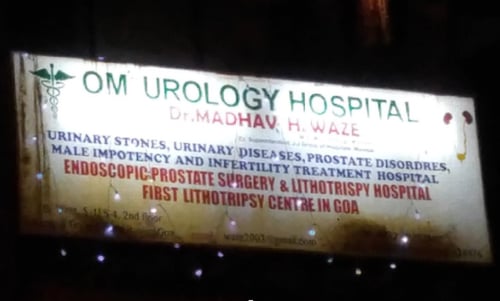Share this
Subscribe to Our Newsletter

Featured Report
Download your copy of "Make Informed Decisions with Confidence: Solving The Community Engagement Puzzle" today!
by NRC on January 7, 2016

- By Tom Miller -
A film of white smoke hugs the earth like the skin on a pot of milk let to scald. The boiling milk is Delhi and the skin is pollution from the fields charred after agricultural burns. I’m in India for a wedding but cannot resist comparing government service delivery here with what we have back in the U.S. By the most superficial analysis, such a comparison seems almost brutish. After all, India has four times the U.S. population with about 1/9th its GDP.
Nevertheless, government in democracies like the U.S. and India requires public investment in shared benefits. Sometimes, and perhaps most often during public comment, U.S. local government leaders get such earfuls about the problems in their communities and may forget how relatively good most of us have it.
Asphalt maintenance, growth management, violent crime, affordable housing– these are typical fare served up by residents at monthly council meetings across America. A cursory inventory of the evils an outsider notices on the Delhi streets strikingly rebalances the meaning of “problem” that a defeated public servant in the U.S. might understand.
Below are a few examples of government challenges in India that American managers rarely face.
Growth management: The U.S.’s largest city, New York City, grew by about 25,000 people per year to get to 8.5 million from 2013 to 2015. New Delhi grew by 400,000 in one year—16 times that number—to reach over 18 million people. India is on track to surpass China as the world’s largest country by 2022.

Pictured: Streets of New Delhi. CC0
Poverty, affordable housing and income inequality: About 15 percent of New Delhi’s population lives in slums. In Mumbai, it’s about 40 percent. In Mumbai, you can find the largest single-family house in the world, 27 stories occupied by one family of six. It cost a billion dollars to build.

Pictured: Antilia House. Jay Hariani. Flickr. CCBY
Traffic flow: Throughout the country, animals, rickshaws, cars and buses take the race for rare vehicular space to the streets. With all this Brownian motion on the roads, the death rate in India due to road accidents is only double that of the U.S.

Pictured: Rickshaw. CC0
Trash collection: Garbage is not removed only by pigs eating hills of refuse, but the pigs do help.

Pictured: Pigs eating garbage on the streets. Courtesy Tom Miller
Air quality: The Dec. 21, 2015 Hindu Newspaper headline reads, “Air pollution in state of emergency in Delhi.” We’re told it’s like this only three months of the year.

Pictured: Smog over the city. CC0
Public safety: The gun homicide rate is more than tenfold in the U.S. than in India. On the other hand, about 700 passengers died from falling out of overcrowded trains in 2015. Also, more than 2500 Indians were killed or injured from “communal incidents.” Such incidents arise from affronts to religious or ethnic groups from postings on social media, property disputes, defiling of sacred artifacts or gender related issues.

Pictured: Overcrowded train in Mumbai. CC0
Health and wellness: Infant mortality in India is eight times higher than the U.S. The combination of excessive infant mortality, air pollution and inadequate health care may explain why the average life expectancy of an Indian is 68 years compared to 79 years in the U.S.

Pictured: Hospital sign. Courtesy Tom Miller
[empty_separator]
This blog is no smug call for self-satisfaction, since much of America’s riches and India’s challenges can be credited to the luck of location, natural resources and the turns of history. It is important to recognize that despite these observations with an American slant, the Indian public has a strongly favorable view of the new path its country is on since the election of Narendra Modi.
This blog simply is a reminder that complaints to local government managers about community life sometimes are examples of how good our worst can be. When understood in the context of the world we rarely see, it is easier to remember that disappointments expand to fill the space between what we have and what we expect.

Download your copy of "Make Informed Decisions with Confidence: Solving The Community Engagement Puzzle" today!
These Related Stories


